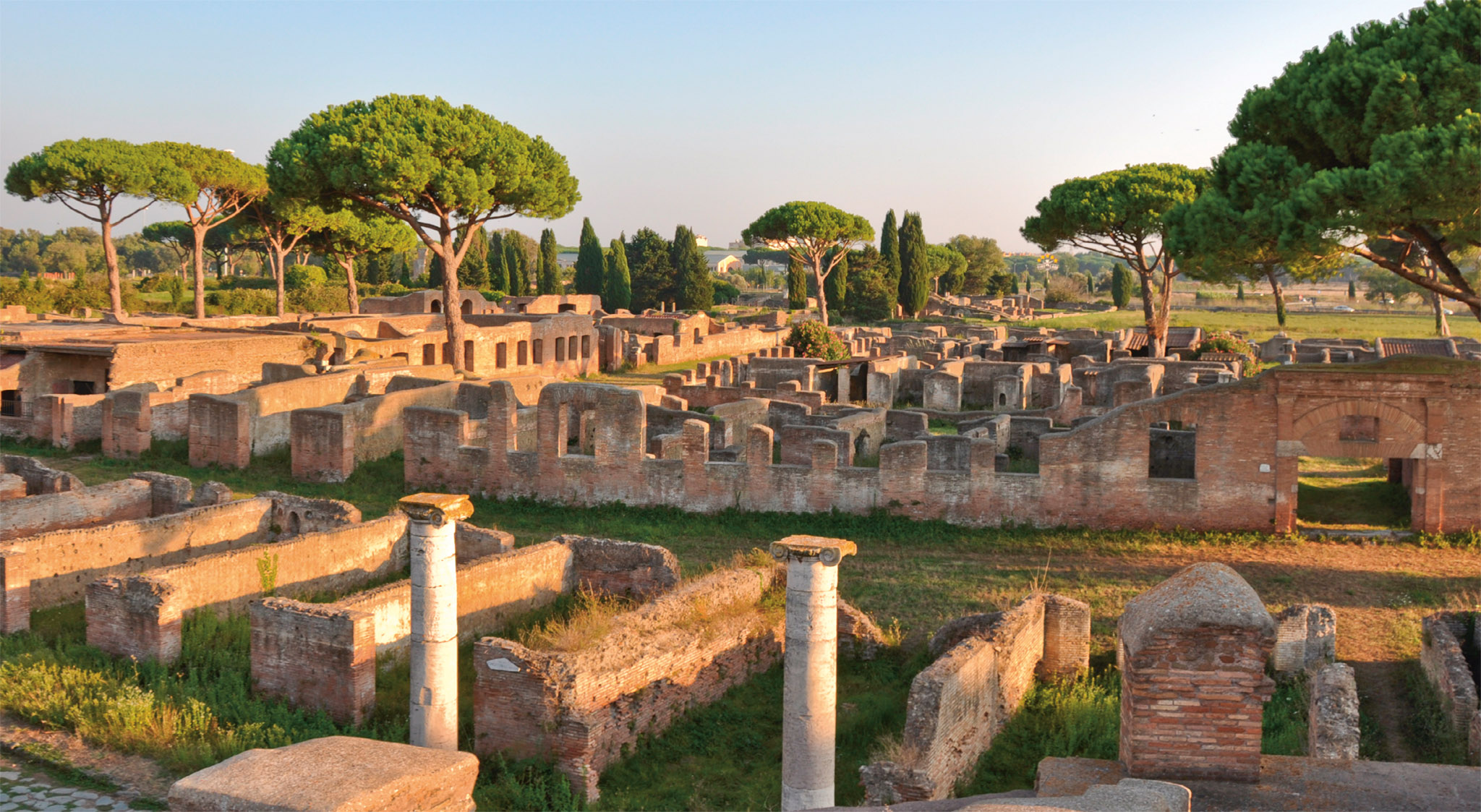
t Ruins of shops, houses and apartment blocks at Ostia Antica
⌂ Viale dei Romagnoli 717. Site is 25 km (16 miles) southwest of Rome q Piramide, then train from Porta San Paolo station # 8:30am–1 hour before sunset Tue–Sun ∑ ostiaantica.beniculturali.it
With its ivy- and creeper-covered walls rising from long grass, scattered in spring with wild flowers, the remains of the ancient Roman port of Ostia are among the most extensive in Italy.

t Ruins of shops, houses and apartment blocks at Ostia Antica

t A carved stone mask displayed outside the theatre. Beneath the brick arches supporting the tiers of seats were taverns and shops.
Ostia was originally built on the coast, but over the centuries silt from the Tiber has shifted the coastline further west, and the site is now several kilometres from the sea. In Republican times Ostia was Rome’s main commercial port and a military base protecting the mouth of the Tiber. It continued to flourish through Imperial times until the 4th century, when the harbour began to silt up, covering the old city with sand and mud. The ruins are remarkably well preserved and give a good picture of life under the Roman Empire. People of all social classes and from all over the Mediterranean lived and worked here.
The main road through the town, the Decumanus Maximus, would have been filled with hurrying slaves and citizens, avoiding the jostling carriages and cars, while tradesmen pursued their business under the porticoes. The public buildings included bathhouses, such as the Baths of the Cisarrii (wagoners), the theatre, the Forum and temples.
Experience Beyond the Centre

The Thermopolium was a bar that served wine and hot snacks. The ruins retain an L-shaped counter and a beautiful fresco showing carrots, onions and chickpeas.

insider tip
Still wild in parts, Ostia Antica is a lovely, relaxing site for a picnic accompanied by some ancient history. For picnic ingredients, shop at a great deli, Volpetti (Via Marmorata 47A; Tel 06-574 2352), near the Porta San Paolo station.